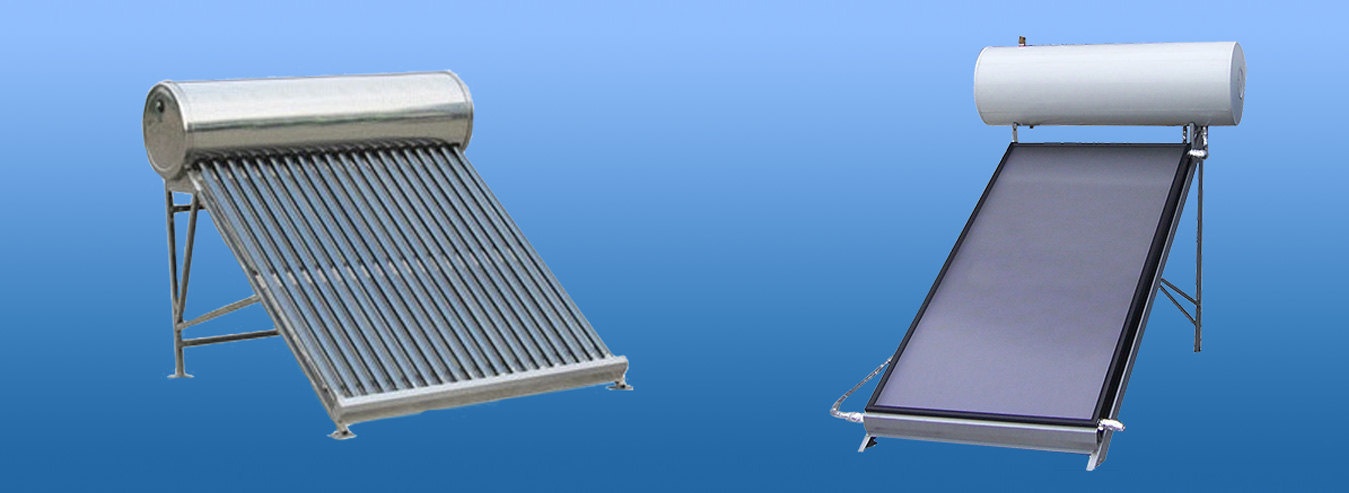
Solar Water Heater Jaipur
VG Energies, a dealer of solar water heaters in Jaipur, Rajasthan, is known to be the leading quality provider of it. We particularly specialize in those solutions that are friendly to mother nature and also trendy, without missing out on the fun way of it.
ETC (Tube) Based Solar Water Heater.

Why Choose us
Catalysts for change before fully tested markets are maintain wireless scenarios after intermandated applications predominate revolutionary.
- We use the latest diagnostic equipment
- We are a member of Professional Service
- Automotive service our clients receive
Flat Plate Tube Collector
Flat plate collectors can heat the fluid inside using either direct or indirect sunlight from a wide range of different angles. They also function in diffused light, which is dominant on cloudy days as it is the surrounding heat that is being absorbed and not the light, unlike photovoltaic cells. How hot the circulating water gets will depend mostly on the time of the year, how clear the skies are and how slowly the water flows through the collector’s pipes.
A solar thermal device captures and transfers the heat energy available in solar radiation which can be used for meeting the requirements of heat in different temperature ranges.
Three main temperature ranges used are –
Configuration
Solar water heating system (SWHS) is a device which supplies hot water at 60°C to 80°C using only solar thermal energy without any other fuel. It has three main components, namely,
1. Solar Collector
2. Insulated hot water storage tank and
3. Cold water tank with required insulated hot water pipelines and accessories.
In the case of smaller systems (100 – 2000 liters per day), the hot water reaches the user end, by natural (thermosiphon) circulation for which the storage tank is located above the collectors. In higher capacity systems, a pump may be used for forced circulation of water.
Working Principle
Evacuated Tube Collectors (ETC) based Solar Water Heaters
Evacuated Tube Collector is made of double layer borosilicate glass tubes evacuated for providing insulation. The outer wall of the inner tube is coated with selective absorbing material. This helps absorption of solar radiation and transfers the heat to the water which flows through the inner tube.
Selection of suitable Solar Water Heating Systems:
1. Flat plate collector (FPC) based systems are of metallic type and have longer life as compared to Evacuated tube collector (ETC) based system as ETCs are made of glass which are of fragile in nature.
2. ETC based systems are 10 to 20% cheaper than FPC based system. They perform better in colder regions and avoid freezing problem during sub-zero temperature. FPC based systems also perform good with anti-freeze solution at sub zero temperature but their cost increases.
3. At places where water is hard and have larger chlorine content, FPC based system with heat exchanger must be installed as it will avoid scale deposition in copper tubes of solar collectors which can block the flow of water as well reduce its thermal performance. ETC based systems do not face such problem.
4. For a house with one bathroom and 3 to 4 members, 100 liter per day capacity system should be sufficient. For more numbers of bathrooms, the capacity will increase accordingly due to pipe losses & more number of family members. Generally the capacity is decided based on hot water required in mornings for bathing. If the usage is in evening & at other times also, the capacity is decided accordingly.
5. A 100 lpd capacity may cost Rs. 20,000 to Rs.25,000 depending on type & location. The cost, however, does not increase linearly with increase in capacity, rather it comes down proportionately as we go for higher capacity system. The system cost does not include the cost of cold water tank, & its stand which is required if overhead tank is not installed in a house/ building. Cost of hot water insulated pipe line also, may be extra if number of bathrooms are more than one. Additional cost towards all these components may increase by 5 to 10%.
6. Avoid putting of electricity back up in storage tank of solar system. If you have electric geyser of say less then 10 lpd capacity or an instant geyser it would be better if you connect the outlet line of solar system with inlet of geyser & set thermostat at 40oC. Your geyser will start only when you get water below 40oC from solar system and will switch off when temperature goes above say 42oC or so. This will save lot of electricity and heat water according to your requirement. However, if you have storage geyser of higher capacity, better to have a separate tap for solar system and use your electric geyser when you don’t get hot water from solar water heater.
Hot Water Storage Tank
The tanks are generally made of stainless steel to avoid corrosion and are insulated to reduce heat losses. They are also fitted with electrical heater as a backup during monsoon days. The tanks may also be made of G.I.
Cold Water Tank & Pipelines
Cold water comes from the over head tank. Hot water from the system is transferred to various utility points through insulated pipelines. A heat exchanger may be provided when the water is hard.
Usages
Domestic: Bathing, Coffee / Tea preparation, Utensils Cleaning etc.
Industrial: Pre-heating of boiler feed water, cooking / dishwashing in industrial canteens. washing of milk canes in dairies, sterilisation of surgical instruments etc.
Economics (Tentative)
• A 100 lpd domestic solar water heating system (SWHS) can cater to a family of 4-5 persons and costs about Rs.20,000 to Rs.25,000
• It saves about 1500 units of electricity per annum equivalent to about Rs.5000/- per year.
Incentives by Government of India (MNRE) under JNNSM Scheme
Subsidy released to beneficiaries installed in the year 2011-12
Get In Touch
-
Hanumant Kunj, Opp. Metro Piller No. 167, Near Khasa kothi Circle, Station Road, Jaipur-302002
